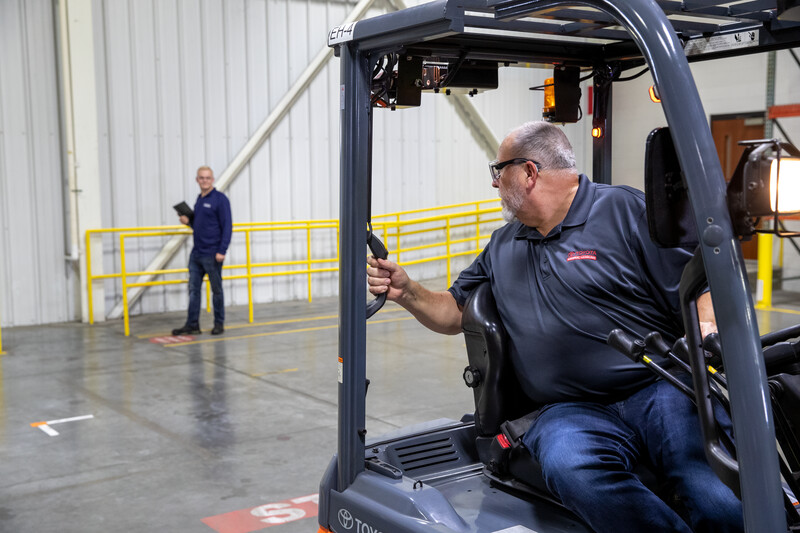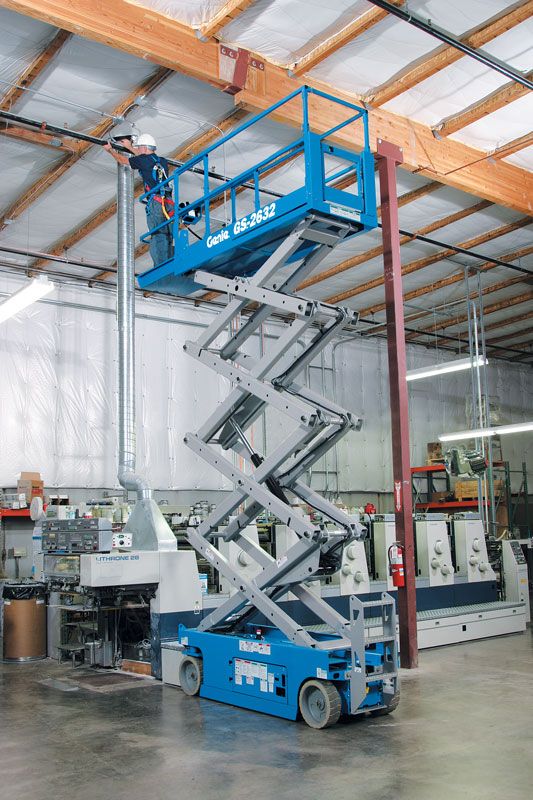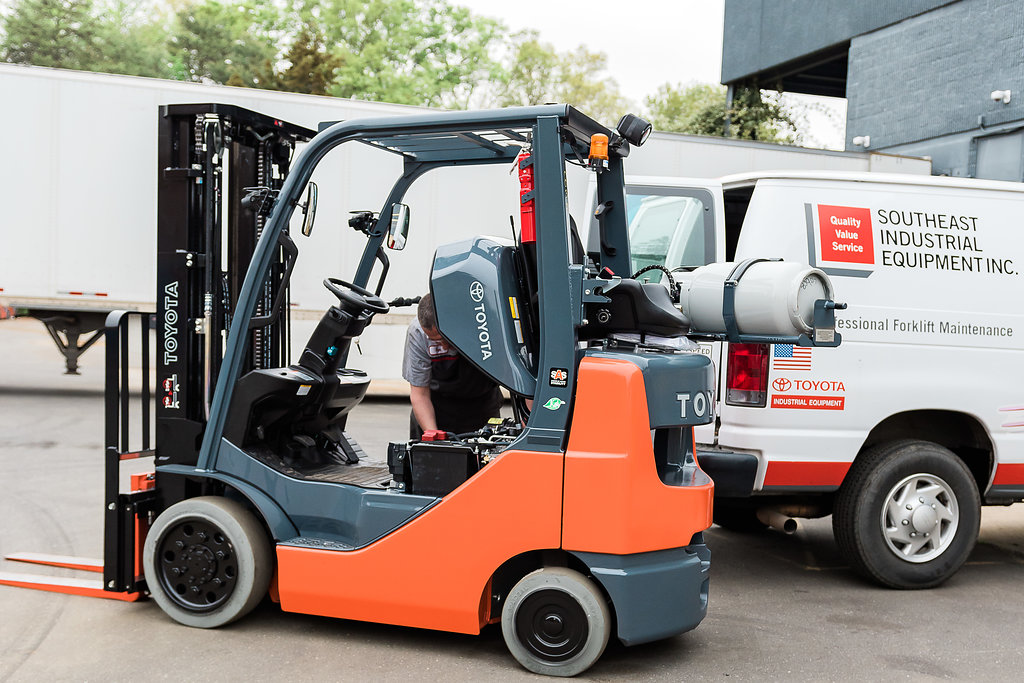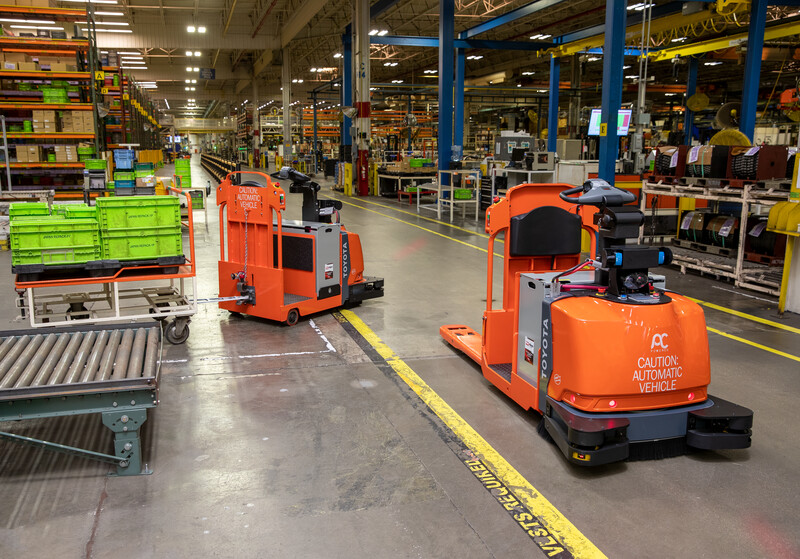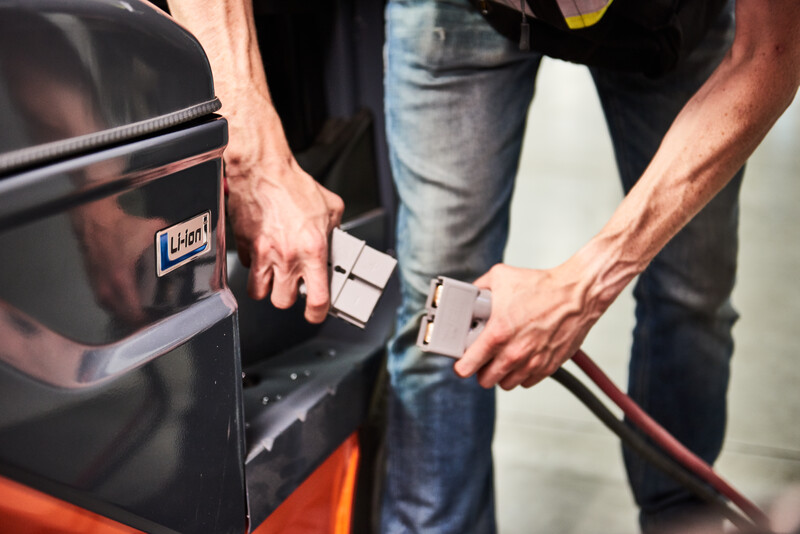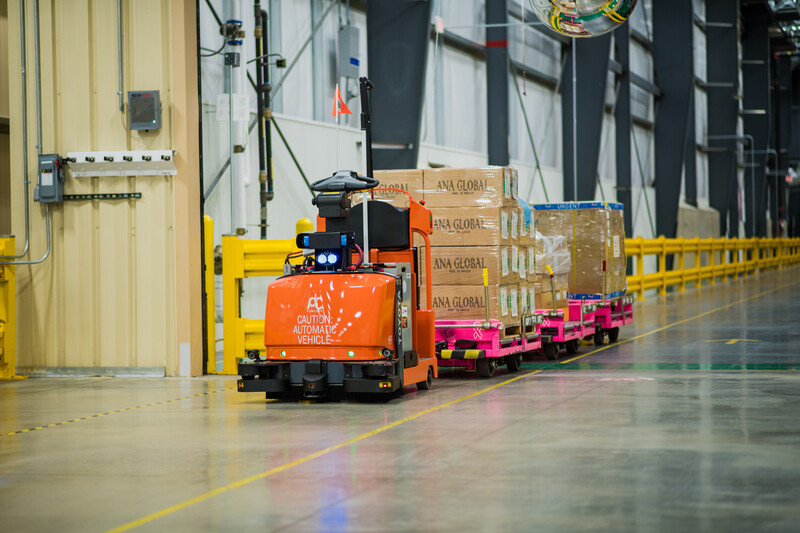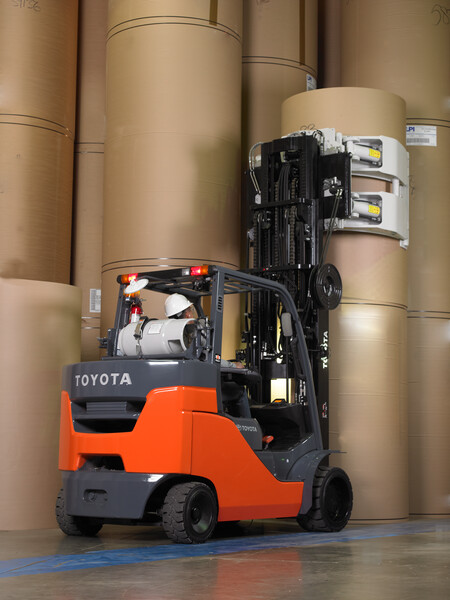When it comes to material handling and warehousing, safety is a top priority. The right forklift can make a significant difference in ensuring a safe working environment for employees and efficient operations for businesses. Toyota forklifts stand out for their commitment to safety, offering advanced features designed to protect operators and pedestrians while enhancing productivity. In this blog, we’ll explore 5 safety features of Toyota forklifts that make them a reliable choice for workplace safety.
1. System of Active Stability (SAS)
Toyota’s System of Active Stability (SAS) is a game-changer in forklift safety. SAS continuously monitors forklift operations and automatically adjusts the rear axle’s angle to stabilize the forklift during turns. This technology helps prevent tip-overs, a common cause of accidents, ensuring safe maneuverability even at high speeds.
2. Active Mast Function Control
Active Mast Function Control is another innovative feature that Toyota offers. This system minimizes the risk of cargo accidents by controlling the mast’s forward and rearward tilt speeds. By reducing the risk of load spills, operators can handle materials more safely and efficiently.
3. Operator Presence Sensing System
Toyota forklifts are equipped with an Operator Presence Sensing System that detects whether the operator is in the proper driving position. If the operator is not seated, the system automatically disables the hydraulic functions and prevents forklift movement, enhancing safety by preventing accidental starts or movements.
4. 360-Degree Visibility
Visibility is crucial for forklift operators to navigate safely and avoid accidents. Toyota forklifts feature a spacious operator cabin and strategically placed windows that provide excellent 360-degree visibility. This ensures operators can easily spot pedestrians, other forklifts, and obstacles in their path.
5. LED Lighting
Well-lit workspaces enhance safety, particularly in dimly lit warehouses. Toyota forklifts come equipped with energy-efficient LED lighting that provides bright and clear illumination for the operator’s work area. Improved visibility helps prevent accidents and enhances the operator’s ability to work safely and efficiently.
Toyota forklifts are designed with safety at the forefront, providing operators and businesses with peace of mind and reliability. With advanced features like the System of Active Stability, Active Mast Function Control, Operator Presence Sensing System, 360-degree visibility, and LED lighting, Toyota forklifts set the standard for workplace safety in the material handling industry. By choosing Toyota forklifts, businesses can create a safer working environment while improving productivity and operational efficiency.
